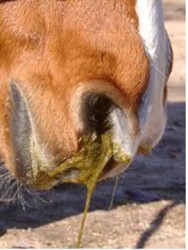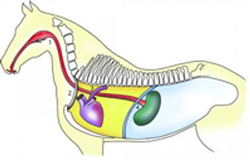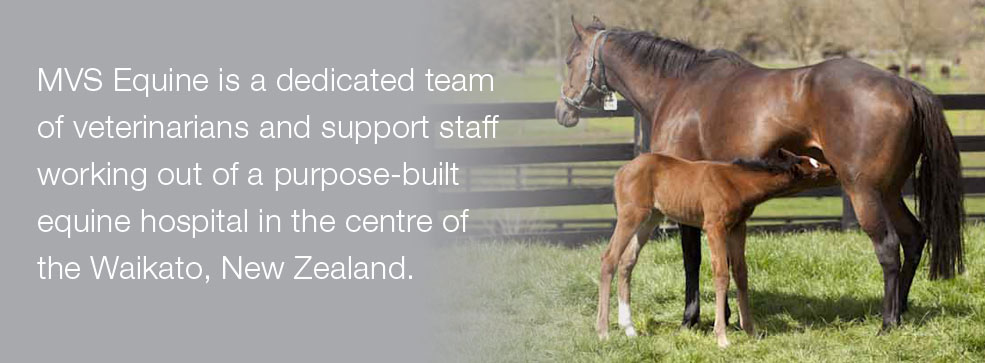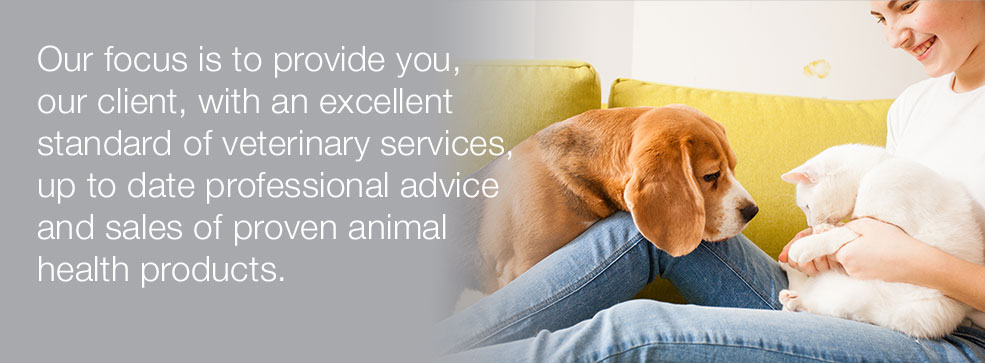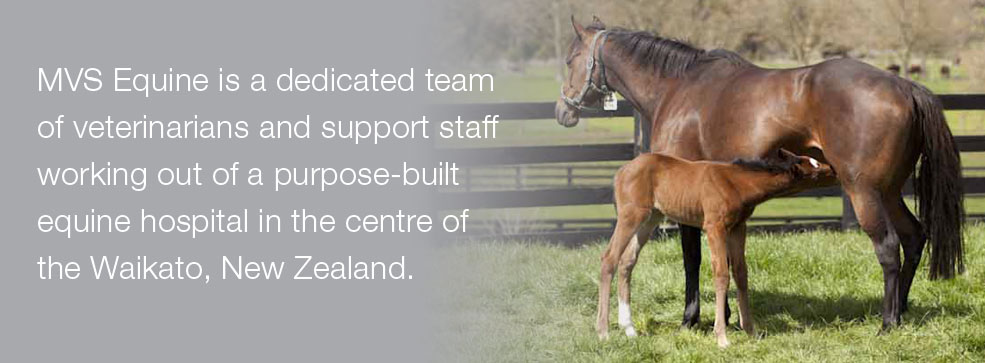Choke
Choke
May 28, 2012
What is Choke?
Choke occurs when food or a foreign body obstructs the horse’s esophagus. The esophagus is a muscular tube that transports food from the mouth to the stomach. The obstruction may be partial or complete.
Causes
The most common causes of choke are swallowing food or other material which is either too dry or coarse, or food which swells rapidly once chewed and becomes lodged in the esophagus (e.g. unsoaked sugar beet pulp). It can also occur if a greedy horse attempts to swallow feed quickly without chewing it thoroughly. Age-related tooth loss, dental wear, or oral pain caused by sharp teeth may predispose to inadequate chewing of food before swallowing. Any condition which interferes with the horse’s ability to swallow (e.g. sedation, trauma to the neck/esophagus) can predispose to choke.
Clinical Signs
Discharge of saliva and feed material from the nostrils and/or mouth, outstretching of the neck, and difficulty swallowing are the most obvious signs of choke. When first ‘choked’ some horses will panic and make repeated unsuccessful efforts to swallow, cough and ‘gag’. If the condition has gone unnoticed for a period of time, then the horse may become dehydrated and severely depressed. Although many cases clear on their own, if you think your horse has choke then keep the horse as quiet as possible, remove all feed and water, and contact your vet immediately.
Treatment
A sedative is administered to keep the horse calm and encourage it to keep the head lowered. Keeping the head lowered helps fluid drain from the nose and reduces the risk of food and saliva being inhaled into the windpipe. Drugs may be administered to help relax the esophagus. The obstruction is then gently eased down into the stomach with the help of a stomach tube. If this cannot be achieved easily, the obstruction is flushed out with water via the tube. Fluid is allowed to run out, gradually flushing some of the obstructing material out with it. This can be a long process and patience is needed to avoid damaging the esophagus. In some panic-stricken, uncooperative or solidly-obstructed cases it is necessary to anaesthetize the horse to allow flushing to be performed safely and thoroughly. Once the choke is cleared the horse is given anti-inflammatories and should be fed sloppy feeds or grass for several days to allow any swelling to subside.
Complications
Most cases resolve without complications. The most serious potential complication is rupture of the esophagus either as a direct result of the obstruction or from attempts to dislodge it. Another possible complication is pneumonia due to the horse inhaling fluid and/or food material into the windpipe and lungs resulting in infection. If left untreated pneumonia can be fatal. If aspiration is suspected then a course of antibiotics is prescribed. It is important to monitor horses for any signs of coughing or depression in the days after an episode of choke.
Prevention
It is very important to soak dried foodstuffs thoroughly to allow it to swell before it is eaten. Providing regular routine dental care ensures that the horse can chew food thoroughly and effectively before swallowing. Some horses will choke on a particular feed, and once this is recognized access to it should be avoided. Large stones in the feed box can slow down greedy eaters. Lastly, it is important to provide access to clean water at all times to encourage the horse to maintain normal hydration.
Photo Credits
Top: Courtesy of www.horseprotection.org
Bottom: Courtesy of www.merckvetmanual.com
